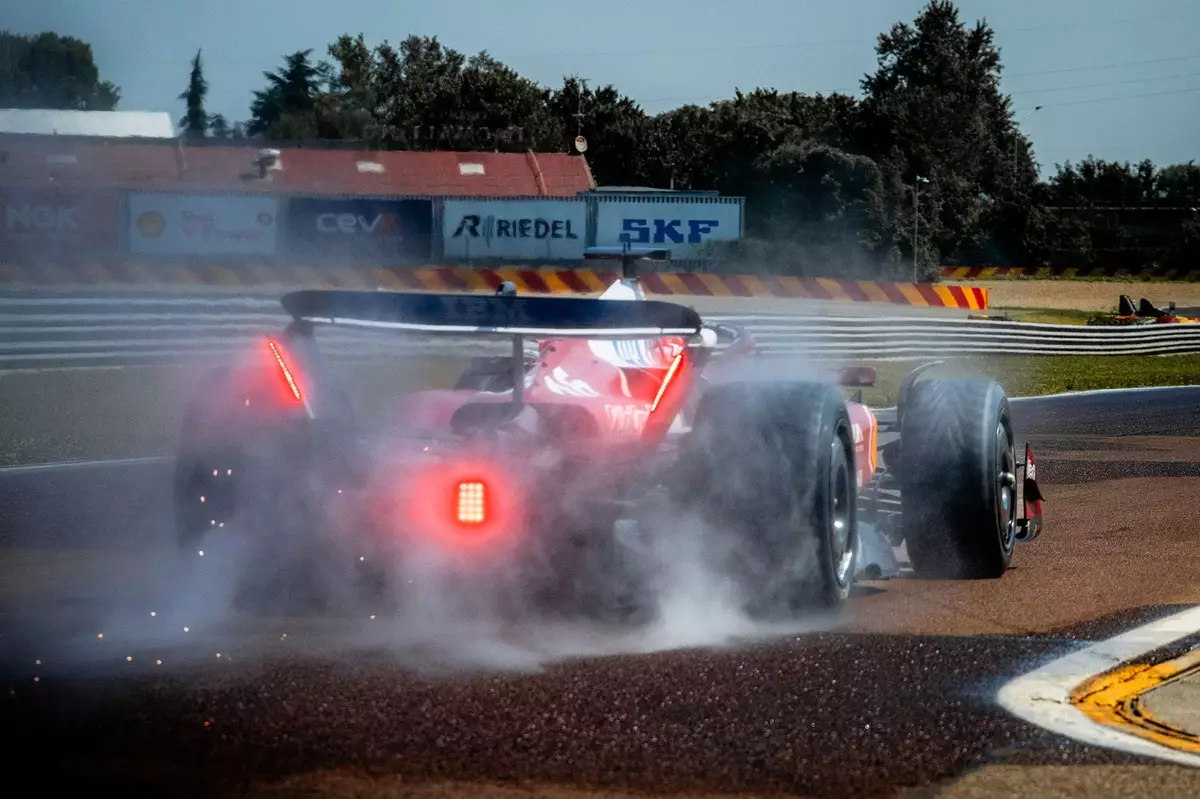In the high-octane world of Formula 1, where milliseconds dictate victories and losses, the significance of tyre performance cannot be overstated. Particularly under wet conditions, the ability of a tyre to channel excess water while maintaining traction is critical. Pirelli’s blue-sidewalled wet tyres enthuse a vision of mastering aquatic challenges on the racetrack, boasting an astonishing capability to displace 85 litres of water every second. Yet, the irony lies in their infrequent engagement at racing speeds—a scenario reminiscent of wishing for a blue moon rather than witnessing the optimal use of these advanced engineering wonders.
The predicament is amplified during rainy races, which often conclude with red flags due to unsafe conditions. Cases in point are the infamous wet debacles at the 2021 Belgian Grand Prix and the recent São Paulo Grand Prix, where drivers were hesitant to pit for the wet tyres, opting instead to roll the dice with intermediates. This hesitancy to switch to the engineered solution reflects not only the tyres’ performance limitations but also a tactical contemplation of maintaining track position over the potential utility of the blue-walled tyres.
Transforming Expectations with Next-Gen Tyres
The shift in perspective is underway as Pirelli gears up for the introduction of next-generation tyres that aim to bring wet tyre performance closer to that of intermediates. Presently, the wet tyres struggle to hold their own under conditions that do not require the immediate attention of race officials. They tend to overheat and succumb to rapid degradation, making them less reliable in less-than-ideal weather conditions. According to Pirelli motorsport manager Mario Isola, the intention for the upcoming 2026 series is focused on refining the wet tyre experience—not merely to function behind safety cars but to become a viable race option.
Isola emphasizes the ongoing validation process of the new wet and intermediate compounds, suggesting that a fundamental redesign could significantly alter the crossover points—those critical moments when track changes necessitate a switch from slicks to wet tyres. This is a balancing act, with the goal being to create a performance landscape that allows drivers to confidently navigate through pouring rain without losing precious time.
Testing, Tweaking, and Triumphs
To facilitate the validation process, Pirelli recently conducted a test at Ferrari’s Fiorano circuit, enlisting the skill sets of drivers Charles Leclerc and Zhou Guanyu. Utilizing a ‘mule car’ as a stand-in for the upcoming Gen 3 machines poses challenges, primarily due to inaccuracies inherent in such simulations. The summer weather in Emilia-Romagna further complicated matters, compelling teams and manufacturers to persist through a test rife with unpredictability.
The focal point remains the crossover performance between wet and intermediate tyres. The technical distinction between these two types is where races can be won or lost, especially in unpredictable weather. The ideal transition point from slicks to intermediates typically occurs when lap times begin to lag at around 112% of dry pace. The previous wet tyres fell short, requiring conditions to worsen further before becoming functional at a demanding 120%. Recent iterations have improved marginally, with a new specification indicating performance activation at 118%, but that’s still a work in progress.
Redefining the Future of F1 Wet Weather Racing
Pirelli’s innovation in tyre technology reflects an acute awareness of the complexities of rain racing. Despite the inherent challenges—such as visibility issues caused by spray, which cannot be entirely rectified—the potential for enhanced tyre performance is promising. The evolution of wet tyres can redefine not just how races unfold in adverse weather but also how drivers approach strategy and safety on the track.
The quest for an effective wet weather tyre that genuinely meets the demands of racing is emblematic of F1’s larger narrative: the relentless pursuit of improvement. As the automotive sport continues to innovate, the refinement of tyres will be pivotal in shaping thrilling and safer performances in rain-laden races ahead. Pirelli’s commitment to redefining wet weather strategies stands as a testament to the industry’s drive—where every drop of water is an opportunity waiting to be seized.


Leave a Reply